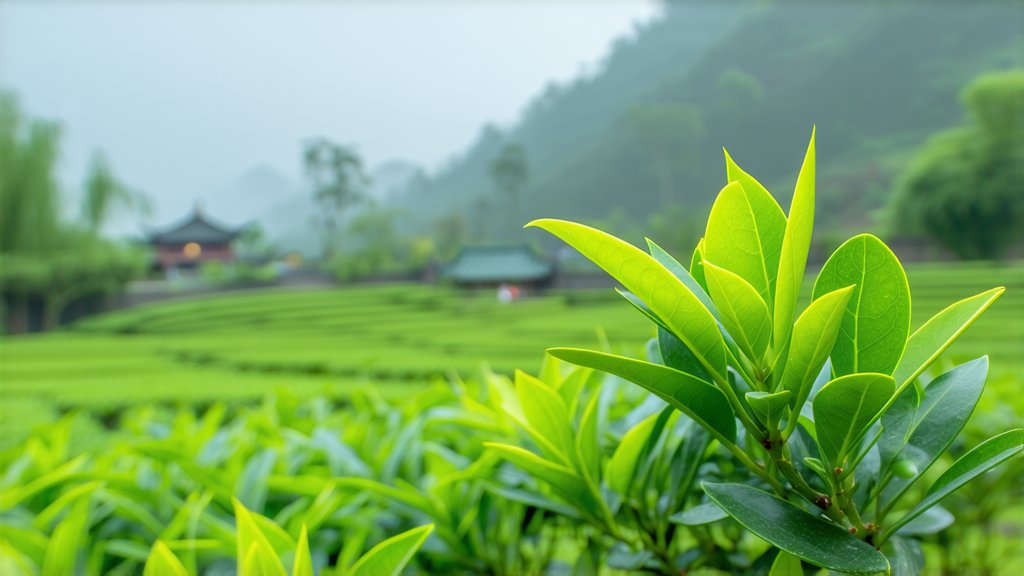
Junshan Yinzhen, often referred to as the crown jewel of Chinese Huangcha (yellow tea), stands as a testament to the meticulous craftsmanship and deep-rooted traditions that have shaped China's rich tea heritage. This exquisite tea, originating from the misty mountains of Junshan Island in Hunan Province, is not merely a beverage but an experience that encapsulates centuries of cultural refinement and natural harmony.
Historical Background
The history of Junshan Yinzhen traces back over a millennium, with its cultivation believed to have begun during the Tang Dynasty (618-907 AD). The tea gained prominence during the Qing Dynasty when it was designated as a tribute tea exclusively for the imperial court. Its name, "Yinzhen," translates to "silver needles," a poetic reference to the delicate, downy buds that characterize this tea. These silvery tips are carefully handpicked before the leaves fully unfurl, ensuring the highest quality and most refined flavor profile.
Varieties and Grading
Junshan Yinzhen is categorized into different grades based on the picking standard and the ratio of buds to leaves. At the pinnacle sits Junshan Yinzhen No. 1, comprised solely of single, pristine buds, followed by No. 2 which includes one bud with one leaf, and so forth up to No. 4, which may contain two leaves and a bud. Each grade offers a unique sensory journey, with No. 1 being the rarest and most sought after due to its exceptional delicacy and purity of flavor.
Artistry in Processing
The production of Junshan Yinzhen is a labor-intensive process that demands precision and patience. After the selective hand-picking, the fresh tea undergoes a series of meticulous steps:
- Withering: The freshly picked buds are spread thinly on bamboo mats under the gentle sun or in shade to reduce moisture content gradually.
- Fixation: Unlike green tea, which is quickly fried or steamed, Huangcha undergoes a slower, more controlled fixation process through pan-firing, allowing a subtle oxidation to occur, giving rise to its distinctive yellow hue.
- Yellowing: This unique step involves wrapping the tea in cloth or paper and letting it sit in a humid environment for several hours, promoting further oxidation without direct heat. This process enhances the tea's aroma and mellows its taste.
- Drying: Finally, the tea is slowly dried to remove any remaining moisture, preserving its delicate flavors and aromas.
Appreciating Junshan Yinzhen
To truly appreciate Junshan Yinzhen, one must engage in the ritualistic practice of Gongfu Cha, the Chinese art of tea ceremony. Here's a guide to savoring this golden elixir:
- Warm the Teaware: Begin by warming your teapot and cups with hot water to ensure even temperature distribution during brewing.
- Measure the Tea: For every 150ml of water, use approximately 2-3 grams of Junshan Yinzhen, adjusting according to personal preference.
- Infusion: Use water heated to around 75-80°C (167-176°F) to gently pour over the茶叶leaves. The first infusion serves to 'wake' the leaves, with subsequent infusions revealing deeper flavors.
- Steeping Time: Allow the tea to steep for about 1-2 minutes for each infusion, increasing slightly with each subsequent brew. Observe the color transformation from a pale yellow to a deeper amber hue.
- Aroma and Taste: Before sipping, take a moment to inhale the subtle floral and fruity notes that escape the cup. As you sip, let the tea coat your palate, noting its silky texture and the interplay of sweetness and slight astringency.
- Multiple Infusions: Junshan Yinzhen is renowned for its ability to withstand multiple infusions, each revealing new dimensions of flavor, making it a tea for contemplation and conversation.
In conclusion, Junshan Yinzhen represents not just a tea but a bridge connecting past traditions with present-day tea enthusiasts worldwide. Its production is a testament to the artistry and dedication inherent in Chinese tea culture, while its consumption invites us to slow down, appreciate the finer nuances of life, one golden sip at a time. Whether you're a seasoned tea connoisseur or a curious newcomer, Junshan Yinzhen offers an unparalleled journey into the heart of China's tea legacy.
Keywords: Junshan Yinzhen, Huangcha, Tea Culture, Chinese Tea History, Tea Appreciation